AM/FM Radio Makes Your TV Better
Big brands are rediscovering the importance of mass reach media like AM/FM radio and television. Case in point – Media Monitors recently reported that P&G’s use of radio ads has skyrocketed. Where P&G goes, others are sure to follow.
Why the piqued interest in AM/FM radio? Brands are facing a multitude of issues ranging from brand safety to digital fraud, excessive narrow targeting, and the need for reach. As P&G Executive John Fix explains, they’re also looking for the scale needed for their brands to reach the people that buy them.
Yes, television offers scale and it might still seem to be the default for media planners. But in light of declining broadcast audiences and the rise of streaming platforms, TV could use some help.
Here’s why AM/FM radio makes TV better:
TV audiences are down as streaming platforms gain popularity
Year-to-year total TV audience deliveries saw a -12% decrease in Q4 of 2018, according to a Nielsen and Bernstein analysis. Pay TV subscribers are also decreasing as more Americans cord-cut and seek alternative options for their media content. Changes to consumption are significant, and, according to notable cable analyst Craig Moffett, “It may not be an overstatement to say that the pay TV business as we know it is beginning to unravel.”
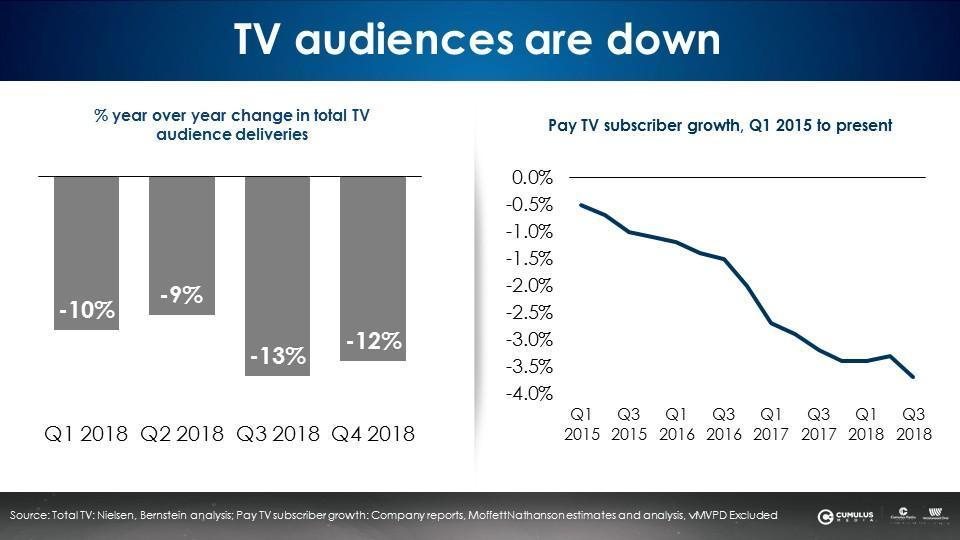
This unraveling can be seen in the impact Netflix’s rise in popularity has had on TV viewing trends. According to a study by Hub Research, in November of 2018, 32% of consumers 16-74 cited Netflix as their preferred platform to watch their favorite shows, up +129% from 2014. 26% selected linear TV.
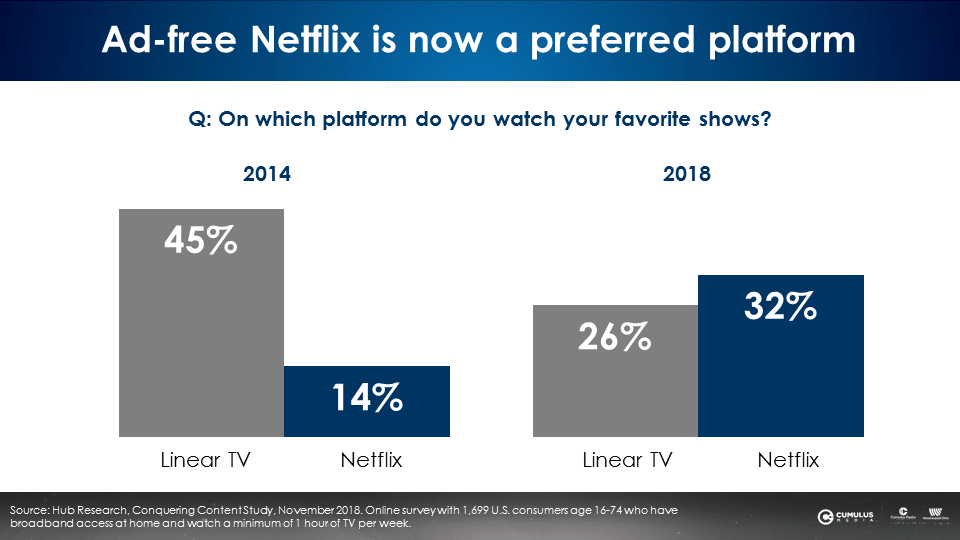
AM/FM radio has massive reach
As AM/FM radio remains the #1 mass reach media, it can supplement TV. According to Nielsen’s latest Total Audience Report, AM/FM radio reaches 91% of Millennials 18-34 compared to TV at 76%. Among persons 35-49, AM/FM radio has a 94% reach while TV’s reach is 90%.
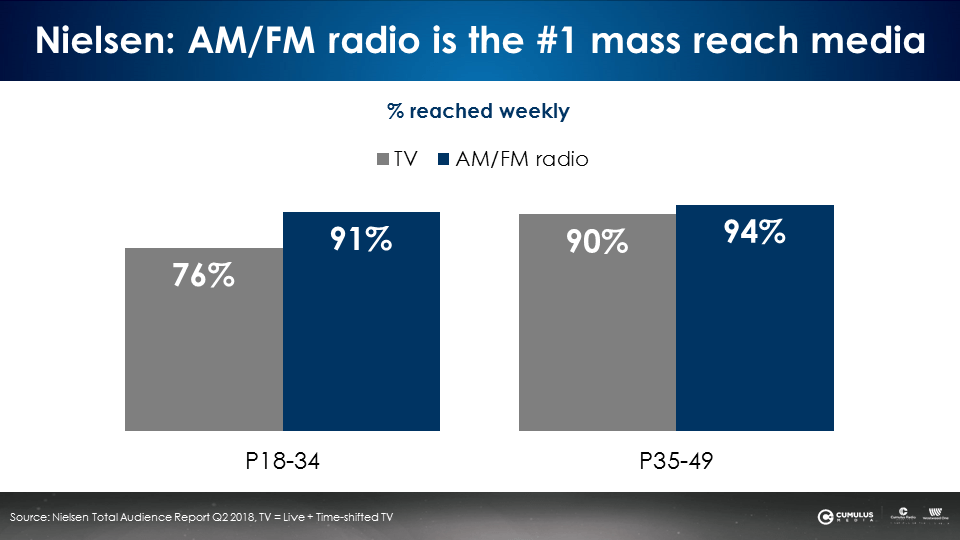
AM/FM radio and TV are complementary media throughout the day
Nielsen reports that during the retail prime time hours of 6AM through 5PM, AM/FM radio has the greatest share among persons 18-49. When AM/FM radio starts to taper off during evening hours, TV starts to see a spike in share. TV and AM/FM radio complement each other like night and day. Together, the two media cover all audience bases.
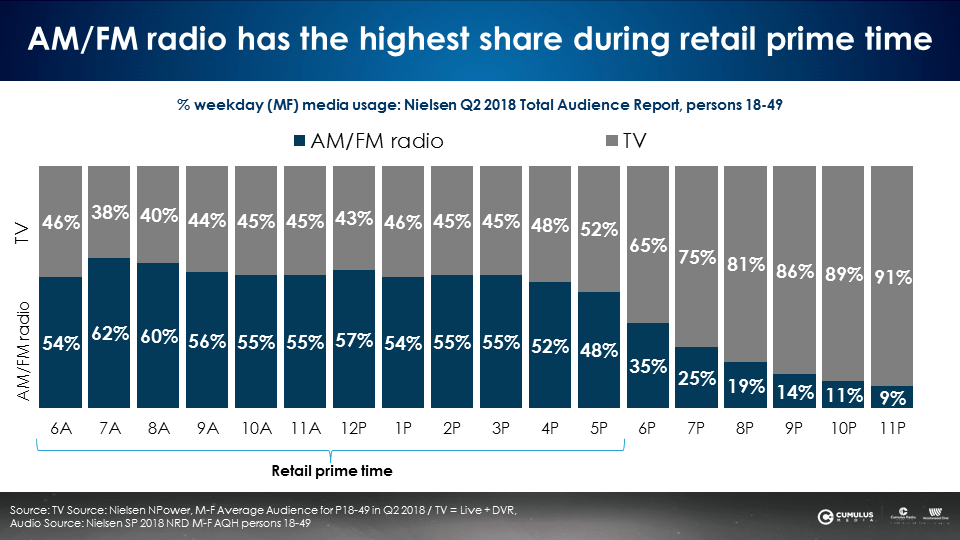
AM/FM radio reaches light TV viewers
Television might be a mass reach media with scale but it poses a problem for advertisers: the light TV viewer. Heavy TV viewers represent a small percentage of the audience but make up the majority of total TV commercial impressions.
Light and non-TV viewers are a large audience, and they are more difficult to reach. Advertisers can’t solve this light TV problem by buying more TV. To fix it, they need AM/FM radio.
Among persons 25-54, 19% are heavy TV viewers and represent nearly half of all TV impressions. A significantly larger percentage, 44%, of persons 25-54 fall into the light and non-TV viewer group. Despite their substantial size, Nielsen reports light TV viewers only represent 10% of total TV commercial impressions. AM/FM radio reaches 92% of light TV viewers, making its addition to TV-only plans an effective way to add reach and frequency.
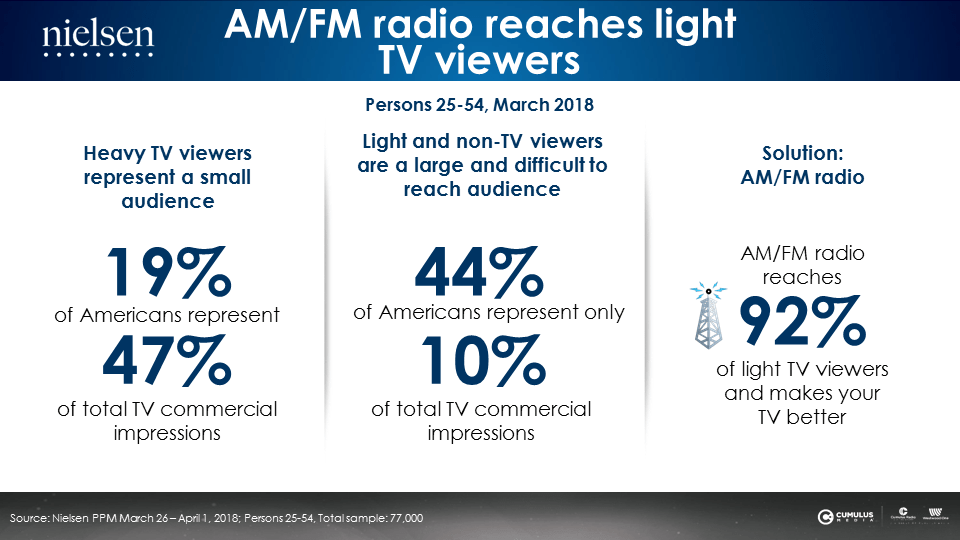
AM/FM radio adds incremental reach and augments TV’s older skew
CUMULUS MEDIA | Westwood One has conducted multiple studies that have revealed how AM/FM radio improves TV campaigns. For one, AM/FM radio added +43% incremental reach to a national restaurant chain’s TV campaign.
In another example, a major cable network’s tune-in campaign saw +15% incremental reach to the paid TV campaign despite AM/FM radio only accounting for 5% of the total TV budget.
In a new case study of a gasoline retailer’s campaign, Nielsen finds AM/FM radio added incremental reach, particularly with younger demos.
Among Millennials 18-34, the gasoline retailer’s TV ads reached 21% of the audience. AM/FM radio reached an additional 17% not reached on TV, representing a +82% lift in audience.
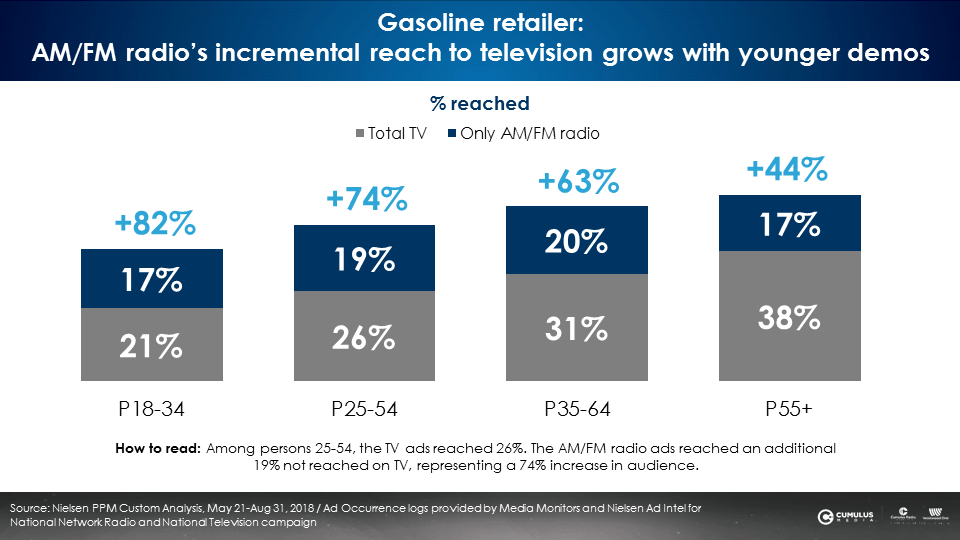
Though declining TV audiences and changes in viewing preferences might be concerning for advertisers accustomed to using TV for scale, TV still needs to be a centerpiece of media plans. Fortunately, there’s hope. AM/FM radio makes your TV better, adding incremental reach, especially among light TV viewers, younger demographics, and during the important periods of retail prime time.
Key takeaways:
- TV audiences are down as streaming platforms gain popularity
- AM/FM radio has massive reach
- AM/FM radio and TV are complementary media throughout the day
- AM/FM radio reaches light TV viewers
- AM/FM radio adds incremental reach and augments TV’s older skew
Lauren Vetrano is Director of Content Marketing at CUMULUS MEDIA | Westwood One.
Contact the Insights team at CorpMarketing@westwoodone.com.